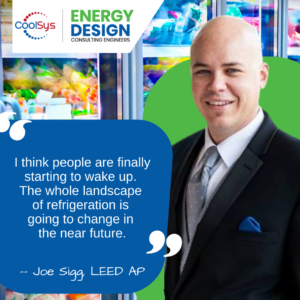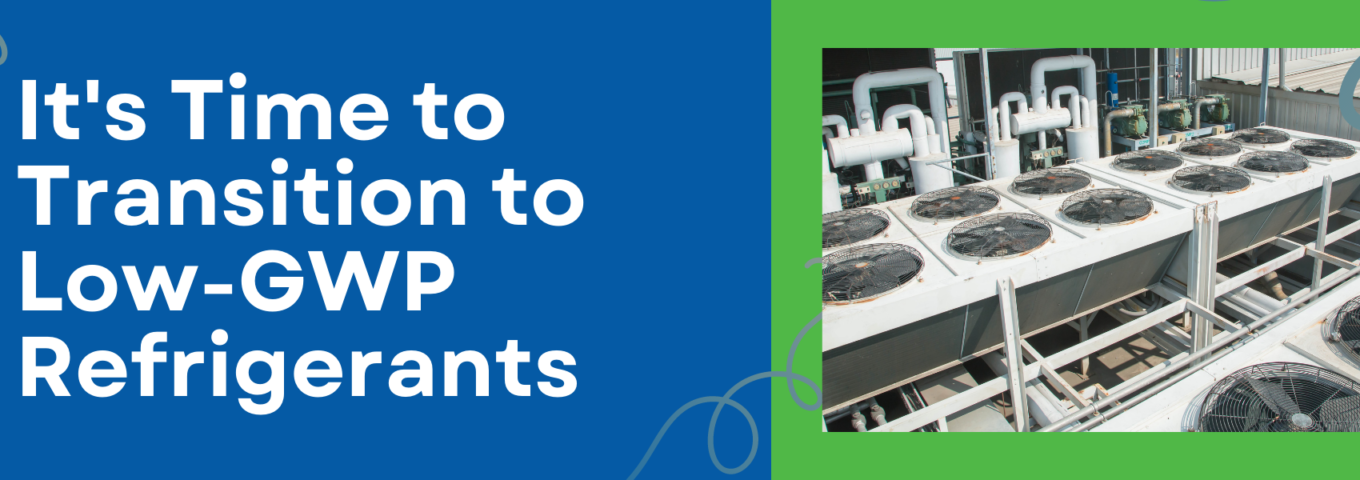Time to Transition to Low-GWP Refrigerants
With quickly accelerating fears of the global impact of climate change, national and international legislation aims to replace the use of synthetic refrigerants with natural ones such as carbon dioxide and propane.
 “I think people are finally starting to wake up,” said Joseph Sigg, LEED AP, Refrigeration Engineering Department Head at CoolSys Energy Design. “The whole landscape of refrigeration is going to change in the near future.”
“I think people are finally starting to wake up,” said Joseph Sigg, LEED AP, Refrigeration Engineering Department Head at CoolSys Energy Design. “The whole landscape of refrigeration is going to change in the near future.”
Manmade hydrofluorocarbons (HFCs) are potent greenhouse gases used in residential and commercial refrigerators. Freon, a brand name that has come to be synonymous with these super-pollutant gases, is a familiar example. When HFCs are released, they allow sunrays to enter but not leave the stratosphere, thereby heating the planet.
Global Warming Potential (GWP) ratings will give you a better understanding of how harmful these common synthetic refrigerants are. The larger the GWP, the more that gas warms the Earth. Carbon dioxide is used as the baseline and has a GWP of one (1). Methane, which accounts for about 20 percent of global emissions and is a major contributor to climate change, is estimated to have a GWP of 28-36. The most prevalent refrigerant in use today is called R-22 and has a GWP of 1,810. That’s almost 2,000 times the potency of carbon dioxide! In other words, just one pound of R-22 is nearly as potent as a full ton of carbon dioxide.
Because large refrigeration units can hold thousands of pounds of HFCs and often leak at a rate of 20% per year, switching to low GWP alternatives can substantially slow the pace of global warming. To promote greener alternatives international treaties, federal mandates, and state legislation such as The Montreal Protocol, The Paris Agreement, EPA’s Significant New Alternatives Policy (SNAP) Program, and The California Air Resources Board (CARB) Refrigerant Management Program are all working to phase out the use of high-GWP refrigerants. Now, as the U.S. EPA begins implementing the American Innovation and Manufacturing (AIM) Act, the refrigerant transition in the United States is officially underway.
 Acceptable alternatives include propane (GWP of 3.3) or carbon dioxide (GWP of 1) for retrofits and new designs of supermarkets, convenience stores, restaurants, bars, cafeterias, hotels, hospitals, and other buildings with large-scale refrigeration units.
Acceptable alternatives include propane (GWP of 3.3) or carbon dioxide (GWP of 1) for retrofits and new designs of supermarkets, convenience stores, restaurants, bars, cafeterias, hotels, hospitals, and other buildings with large-scale refrigeration units.
“We are designing more CO2, propane, and glycol circulated water systems,” Sigg said. “Self-contained propane is a really attractive option for businesses that are not ready to make the dive to CO2.”
There are also many design strategies that drastically reduce the amount of HFC refrigerant needed in multiplex rack systems while at the same time reducing the likelihood of leaks and mitigating the risks of potential leaks. High-efficiency equipment also reduces energy expenses, which can add up to considerable savings for large operations.
Whether the project requires a stand-alone, condensing unit, or multiplex rack system, new low-GWP technologies and high-efficiency solutions are available now and advancing rapidly.
Written by Casey Sky Noon, Business Development Coordinator for CoolSys Energy Design.

